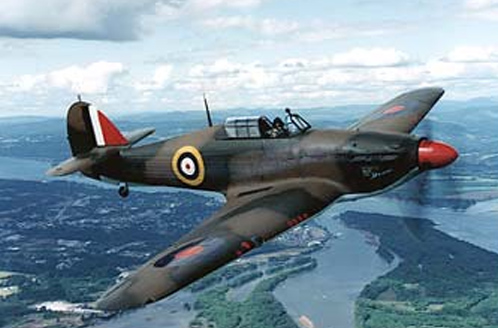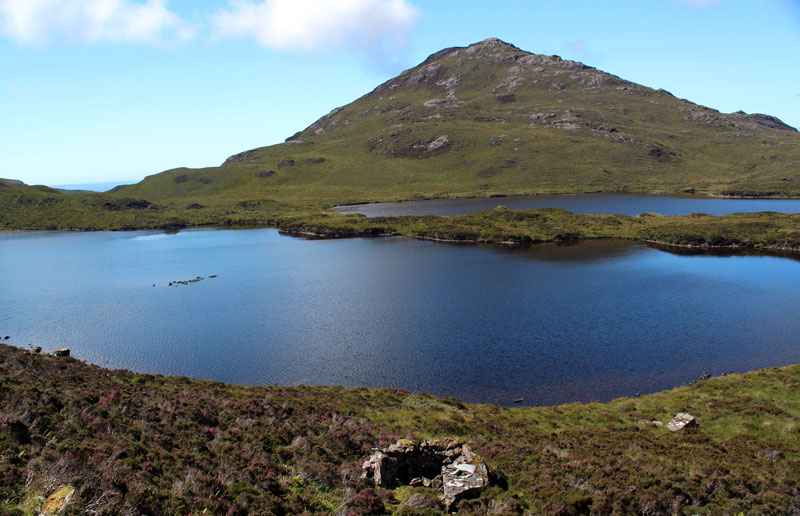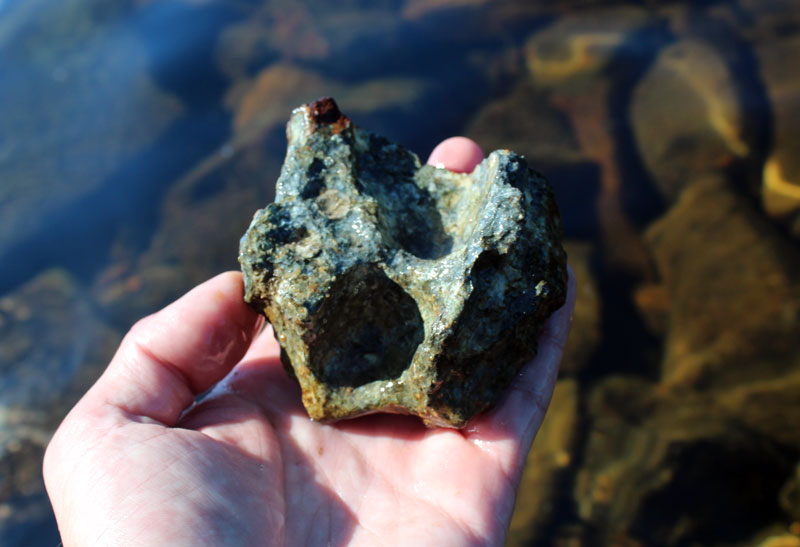
During the afternoon of the 6th February 1944 this aircraft was flying with two other Hurricanes and undertaking a low flying training exercise over the far West coast of Scotland, the aircraft were making mock low-level attacks on amphibious landing craft in the Kentra Bay area. The exercise was almost certainly in preparation for D-Day later in the year. As they neared the end of the exercise the weather made a turn for the worse and the three aircraft flew into low cloud and probably became lost. They became separated and all opted to attempt to land at airfields where they could, the pilot of this aircraft opted to try and fly around the coast; through the Sound of Mull to return to base at Connel airfield, near Oban. Before the aircraft reached the Sound of Mull the aircraft crashed on the Ardmanurchan peninsula, about a mile west of the village of Kilchoan and sadly the pilot was killed. The aircraft was probably just about on course as it flew along the coast but had drifted only a few miles inland when it crashed, had it cleared the area where it crashed it would probably have reached the Sound of Mull beyond and possibly made a safe return to Connel. One of the other Hurricane pilots on the same exercise also crashed in attempting to make a forced landing a few miles west of where LF207 crashed; Hurricane LF160 crashed on the Isle of Coll killing its pilot. The third aircraft, LF180, made a successful forced landing near Carse Farm (now Cowden Farm) Stirling. LF207 and LF160 were reported as missing when they failed to make landings at airfields. Three days later LF160 was found and the following day the wreckage of Hurricane LF207 was found near Lochain Ghleann Locha, near Beinn na Seilg.
I visited the crash site of Hurricane LF207 in August 2013 during a holiday to this part of Scotland. At least three other websites detail this incident and much of what is written here surrounding the reasons for the crash probably duplicates much of the content of these other pages. I have tried to include something new. A small collection of fragments of the aircraft still exists behind a stone shelter/small cairn but all the fragments are in very poor condition. This collection is shown on two other webpages. Believing this cannot be the actual crash site but just a gathering of bits I tried to find an actual crash site. There appears to be no "crash site" on land that I could find and it would appear that the aircraft had crashed at the edge of one of the lochans and exploded. Exploring the edge of the lochan revealed numerous parts of the aircraft including bits of the shattered Merlin engine, propeller blade and other items, looking into the water there were many more pieces visible. There were many more fragments in the water though I did not removed them from the water as everything that had probably been preserved because of being this. Anything that had been thrown onto land or removed from the lochan was now probably in the cairn and is slowly disintergrating. The site could really do with properly surveying before anything else is removed from the water and disintergrates. There also appears to be the edge of an impact crater about two metres from the side of the lochan but the water was too deep and too murky to see it in full.
Pilot - F/Lt Arthur John Woodgate RNZAF (412300), aged 21. Of Oamaru, Otago, New Zealand. Buried Troon Cemetery, Ayrshire (K.1/187).

Arthur Woodgate was the son of Arthur Frederic and Kathleen Demaret Woodgate, of Oamaru, Otago, New Zealand. He is buried in a family grave of his fiance's in Troon Cemetery. Errol Martyn's RNZAF research gives a lot of information into his life. He was born in the Barnet district of Middlesex, England in June 1922 but moved with his family to New Zealand at a young age. He enlisted into the RNZAF in April 1941 and after basic training left for further training in Canada three months later. He gained his Pilot's Wings in November 1941 and left for the UK the same month. On arrival in the UK he trained at 56 OTU before posting to 486 Squadron RNZAF. He was to received a posting to 266 Squadron in mid-1942 and to 128 Squadron in August 1942, he flew sixteen operational flights with them in Sierra Leone before returning to the UK in March 1943. He then again served with 486 Squadron until May 1943 when he was posted to 516 Squadron. Much of his flying with these squadrons was made on the Hurricane type and he was a very experienced fighter pilot with nearly 500 flying hours to his name when he died.

The area where Hurricane LF207 crashed.

The memorial near the crash site.

The collection of wreckage in the foreground and the lochan where the aircraft crashed in front of it. The memorial is located on the other side of Lochain Ghleann Locha on a rock outcrop halfway up Beinn na Seilg beyond.

Fragments of the aircraft in the water. The pieces above look to be fragments of the aircrafts's skin and the piece in my hand below is a fragment of the engine block.


The collection of fragments up at the cairn. A "H.A." Hawker Aircraft inspection stamp was found on one of these pieces.
